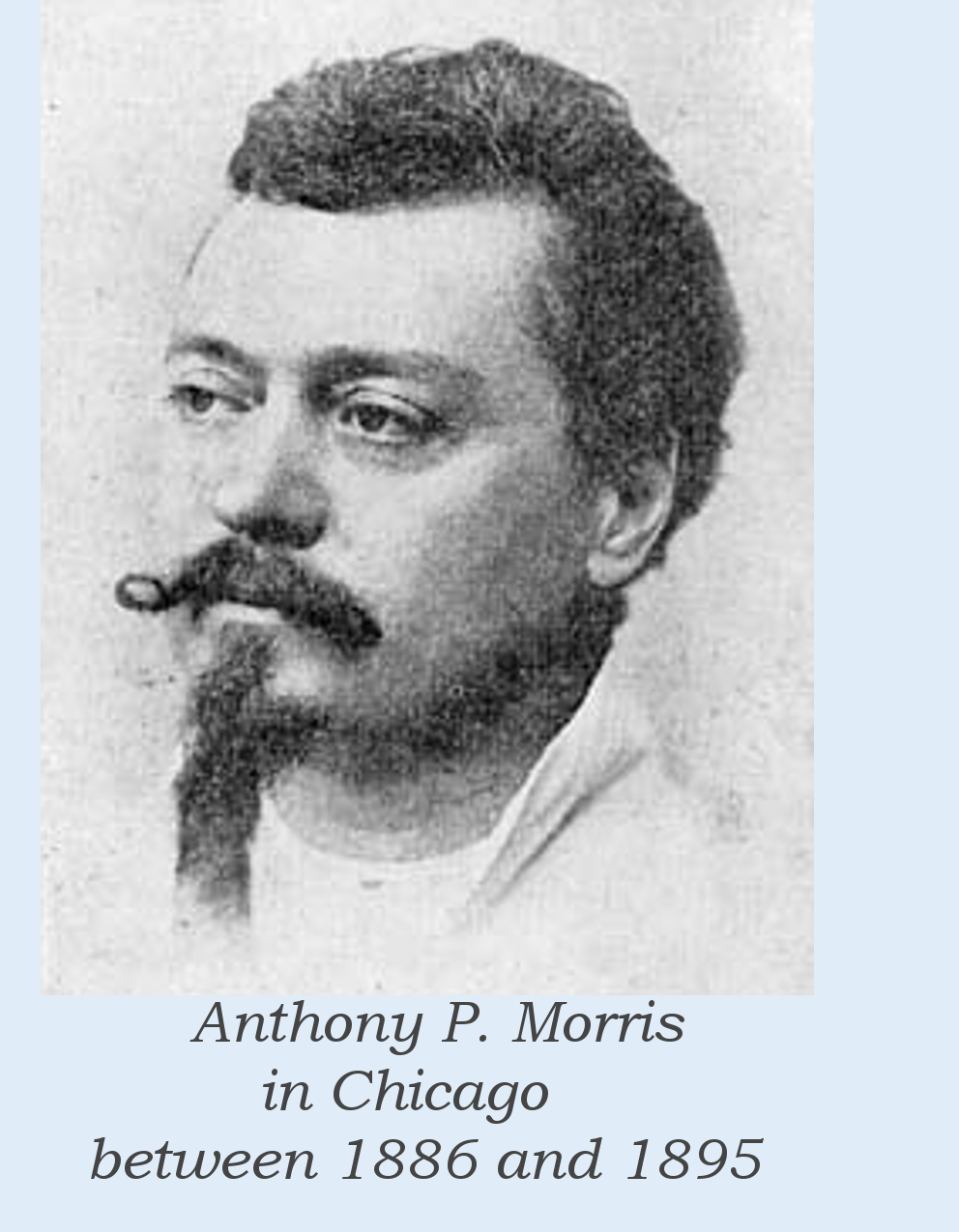
Anthony P. Morris
 Biography
BiographyAnthony Paschal Morris (October 15, 1849–December 27, 1921) was born in Safe Harbor, in the Conestoga Valley, Lancaster County, Pennsylvania. After leaving Andalusia College, in Bucks County, Pennsylvania, in 1867, with no trade or profession, he spent his leisure in writing a series of sketches for the Washington Sunday Herald, and his first serial, Lorilyn, ran for nine weeks in that paper. Being successful in writing, he abandoned his other work to devote his entire time to literature. In the spring of 1868 his Rose and Thorn ran for eight weeks in the same paper.
In 1868 he went into the agricultural and seed business with his father's uncle, Paschal Morris, of Philadelphia, but he continued his writing, in which he was more interested, and in the summer of 1869, when the Saturday Evening Visitor was started in Washington, he wrote for it a series of sketches, then a serial, The Warning Arrow, for which he received $75. In the autumn of the same year, he became associate editor of that paper but retired when Hanna, of Richmond, assumed entire editorial control. In the meantime he had sadly neglected his seed business and, as he himself expressed it, it was “sunk.” He next bought a farm in Prince George County, Maryland, and plunged into agriculture, but still continued contributing to various periodicals and to the country newspapers. About this time he signed a three year’s contract to write for Beadle’s Saturday Journal, and contributed a dozen romances to it between 1871 and 1879.
Early in 1873 he quit farming and returned to Baltimore where he became connected with the Sunday Bulletin. He was married March 3, 1873, to Emma Teresa Van Hook, of Anacostia, D. C., and in 1874 or 1875 set up a printing establishment, A. P. Morris & Co., 26 South Broadway, which at that time was considered to be one of the best in Baltimore. In 1880 he removed to Howard County, Maryland, to run a chicken farm for a few years, but 1885 saw him back in Baltimore as a conveyancer. The next year he came to Chicago and opened a store-brokerage business, calling himself a “Business Mediary.” Presumably that business did not succeed for already in 1886 his name appears in the Chicago Directory as a journalist living at 753 Milwaukee Avenue, but there is no business address given. The next year he appears as a printer, still living on Milwaukee Avenue, a block away, at No. 668. Beginning the next year, with the Directory for 1889, Anthony’s name appears as journalist in every annual directory up to and including 1895, except that in 1890 he is entered as “Foreman.” He lived, during this time, at various places on the North Side but his business address remained at 69 North Dearborn Street until 1893, the room number varying (35, 36, 49, 33) at different times and coinciding exactly with the various changes of room numbers of Warren T. Thomson, publisher of Heart and Hand. It is therefore almost certain that Morris was with this journal at least from 1888 to 1893. It is also likely that he was with Thomson during 1894 and 1895, for while the directory gives no business address, he was still rated “journalist” and Thomson remained at 69 North Dearborn. In the Directory for 1896, however, the names of Morris, Thomson, and Heart and Hand have all disappeared. Apparently Anthony shook the dust of Chicago from his feet in the latter part of 1895 or early in 1896 and about the same time was divorced from his wife. It is possible he used the pseudonym “Nat Newton” for some of his magazine submissions.
Morris appears in the Berkeley City Directory (California) for 1921, where he is listed as a notary. He must, however, have arrived in California many years earlier, for a friend of Mr. P. J. Moran, who knew Mr. Morris, told Mr. Moran that Morris and some cronies used to meet occasionally at Temescal (located around Fiftieth Street and Telegraph Avenue, and now part of Oakland) for a social game. One night they “cleaned him out” and he got even by going home and writing a novel about the “Brigands of Temescal.” It appeared June 4, 1898, as Old Cap Collier Library No. 756 and was entitled Ten Pin Tom, the Contra Costa Detective; or, A Brush with the Brigands of Temescal. Mr. Moran’s friend said the novel was written while Morris was living in Berkeley or vicinity, or perhaps in Temescal. He seems to have lived in that vicinity long enough to have made a lot of acquaintances before he wrote the novel. An earlier California story by Morris entitled Detective Buck and his Four Aids; or, The Tarantula Gang of San Bruno appeared September 12, 1896, as Old Cap Collier Library No. 666. San Bruno is a few miles south of San Francisco and his familiarity with the locality seems fairly good evidence that he was living in California as early at 1896.
In the Berkeley Directory for 1922, the name of Morris’s widow, Mrs. Annie E. Morris, appears. She was his second wife, but her maiden name was not found. Morris had three children: Eleanor (1873-1874), Anthony Paul (born 1875, married to Cecil Fielding Fletcher of New Orleans, Dec. 4, 1894, died 1933), and Virginia (born 1879, married April 20, 1906, to Captain Alexander Shives Williams of the U. S. Marine Corps, died 1922).
Bibliography
Confessions of an Actress (date unknown)
A Modern Monk (date unknown)
Serpent Sin (date unknown)
Bomb Proof (1880s)
Rough and Ready; or, Into the Cannon’s Mouth (January 26, 1884)
El Diablo, the Terror; or, “Piping” the River Pirates (1892)
Detective Buck and his Four Aids; or, The Tarantula Gang of San Bruno (September 12, 1896)
Ten Pin Tom, the Contra Costa Detective; or, A Brush with the Brigands of Temescal (June 4, 1898)